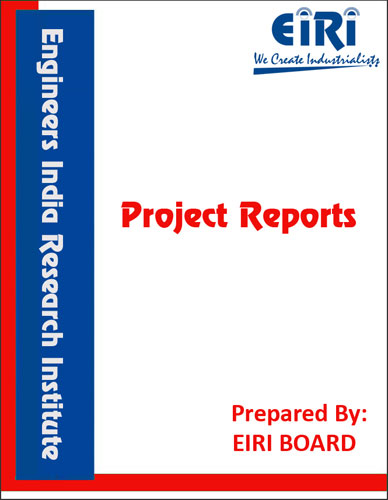COLD SUPPLY CHAIN (FRUITS & VEGETABLES PICK-UP, SORTING, CLEANING, PACKING, FREEZING, SORTING, WAREHOUSING, TRANSPORTING, DISTRIBUTING, WAREHOUSING, DISTRIBUTING TO FINAL WHOLESALER, RETAILERS & CONSUMERS)
The project report includes Present Market Position and Expected Future Demand, Market Size, Statistics, Trends, SWOT Analysis and Forecasts. Report provides a comprehensive analysis from industry covering detailed reporting and evaluates the position of the industry by providing insights to the SWOT analysis of the industry.
We can prepare PROJECT REPORT as per your INVESTMENT PLAN for BANK LOAN REQUIREMENT and INDUSTRY ANALYSIS. All reports are prepared by highly qualified consultants and verified by a panel of experts.
Have Query? Click Here to Chat
Industry Expert is Online, Chat with him for more detail.

COLD SUPPLY CHAIN
(FRUITS & VEGETABLES PICK-UP, SORTING, CLEANING,
PACKING, FREEZING, SORTING, WAREHOUSING, TRANSPORTING,
DISTRIBUTING, WAREHOUSING, DISTRIBUTING TO FINAL WHOLESALER,
RETAILERS & CONSUMERS)
(CODE NO. 1878)
INTRODUCTION
A cold chain is a temperature-controlled supply chain. An unbroken cold chain is an uninterrupted series of storage and distribution activities which maintain a given temperature range. It is used to help extend and ensure the shelf life of products such as fresh agricultural produce, frozen food, photographic film, chemicals and pharmaceutical drugs.
India is an agricultural-based economy. More than 52 percent of India’s land is cultivable, compared to the global average of 11 percent. Each year, India produces 63.5 million tons of fruits and 125.89 million tons of vegetables. India is also the largest producer of milk (105 million metric tons per year). India produces 6.5 million tons of meat and poultry, as well as 6.1 million tons of fish a year. The perishable products transaction volume is estimated to be around 230 million metric tons. Although India has the potential to become one of the world’s major food suppliers, the country’s inefficient cold chain network results in spoilage of almost 40 percent of its total agricultural production. The total value of the cold chain industry is estimated to be as high as USD 3 billion and growing at 20-25 per cent a year. The total value is expected to reach USD 8 billion by 2015 through increased investments, modernization of existing facilities, and establishment of new ventures via private and government partnerships.
The Indian agricultural sector is witnessing a major shift from traditional farming to horticulture, meat and poultry and dairy products, all of which are perishables. The demand for fresh and processed fruits and vegetables is increasing as urban populations rise and consumption habits change. Due to this increase in demand, diversification and value addition are the key words in the Indian agriculture today. These changes along with the emergence of an organized retail food sector spurred by changes to Foreign Direct Investment laws, are creating opportunities in the domestic food industry, which includes the cold chain sector.
• INTRODUCTION
• USES
• VALIDATION
• OVERVIEW OF COLD CHAIN INDUSTRY
• MARKET POSITION AND FUTURE TREND IN COLD SUPPLY CHAIN
• PROSPECT AND CONSTRAINTS OF COLD SUPPLY CHAIN IN INDIA
• PROCEDURE AND GUIDELINE FOR COLD SUPPLY CHAIN
• COLD SUPPLY CHAIN IN INDIA
• ANALYSIS OF COLD CHAIN IN INDIA
• DETAILS OF COLD CHAIN LOGISTICS INFRASTRUCTURE
• COLD CHAIN PACKAGING
• VEHICLE AIR CONDITIONER WITH COLD STORAGE UNIT
• METHODS
• PLANT LAY OUT OF A COLD STORAGE
• COLD STORAGE
• HOTICULTURE PRODUCTS
• PLANT LAYOUT
• SUPPLIERS OF EQUIPMENTS
• SUPPLIERS FOR COLD STORAGE
• GRANT OF PERMISSION AND CLEARANCE TO OPEN COLD SUPPLY CHAIN
• RESOURCES & CONTACT FOR COLD SUPPLY CHAIN
APPENDIX –A
01. PLANT ECONOMICS
02. LAND & BUILDING
03. PLANT AND MACHINERY
04. OTHER FIXED ASSESTS
05. FIXED CAPITAL
06. RAW MATERIAL
07. SALARY AND WAGES
08. UTILITIES AND OVERHEADS
09. TOTAL WORKING CAPITAL
10. TOTAL CAPITAL INVESTMENT
11. COST OF PRODUCTION
12. TURN OVER/ANNUM
13. BREAK EVEN POINT
14. RESOURCES FOR FINANCE
15. INSTALMENT PAYABLE IN 5 YEARS
16. DEPRECIATION CHART FOR 5 YEARS
17. PROFIT ANALYSIS FOR 5 YEARS
18. PROJECTED BALANCE SHEET FOR (5 YEARS)



